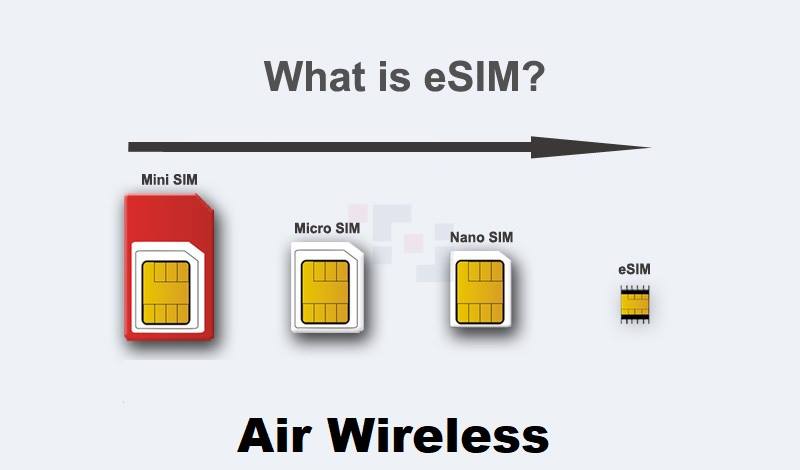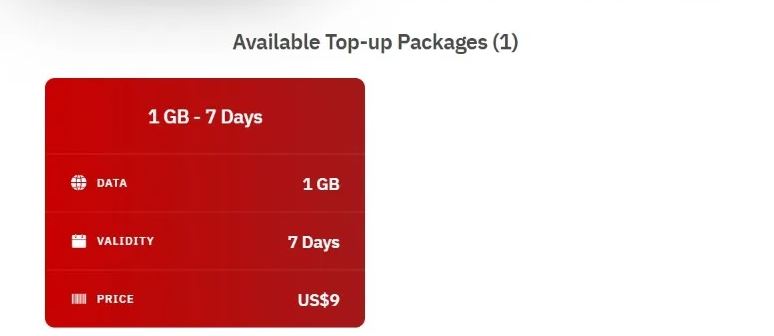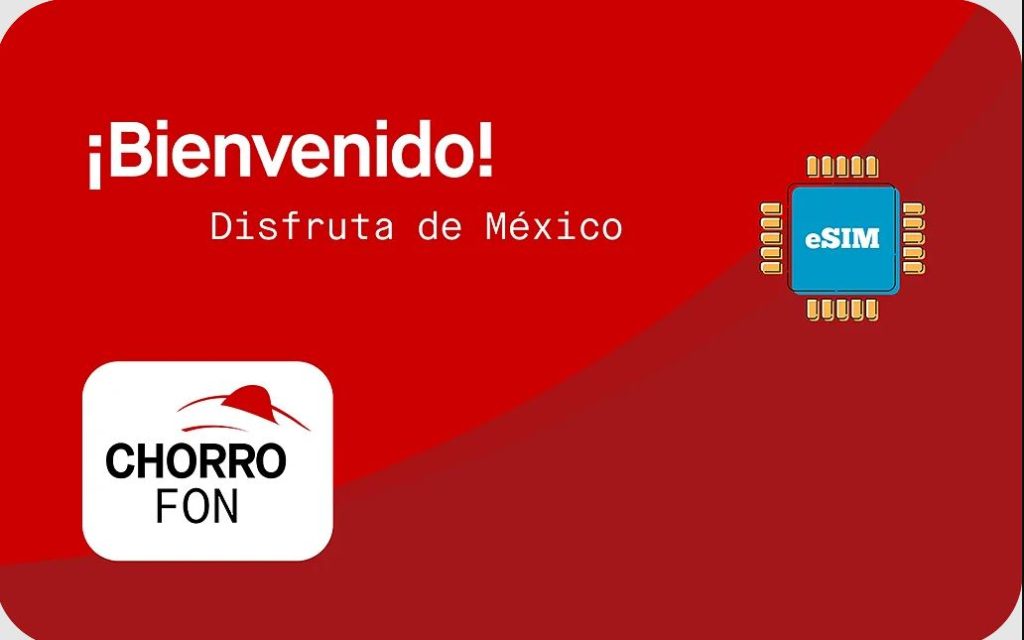There are a ton of e-SIM options available on the market today. To be fully honest it can be very difficult to decide which eSIM is going to work best for your trip. Let’s think about a 2-week trip that’s going to include multiple countries across Europe. In that case it could make a lot of sense to go ahead and buy an eSIM that’s going to grant you coverage in more than one country. Most companies that sell eSIMs or even traditional SIM cards will label these regional SIM cards. It would seem simple enough. Just buy the SIM card that’s regional to Europe, and you’re going to be ok. To be fair that’s usually going to be the simplest option available.
Before you make the purchase though you’re going to want to read through the fine print carefully. The first thing that you’re going to want to account for are the countries that are included in your trip and in your SIM card. You because you’re buying a SIM card or eSIM that’s labeled as the regional option for Europe for example, doesn’t mean that you’re going to get coverage in all of the European countries that you can imagine. In Airalo, there are actually two types of regional SIM cards for Europe and you need to check which countries are on the list of each regional SIM card. Another thing that you want to account for is the type of coverage that you’re going to be able to get in each country.

Why Some SIM Cards Have Better Coverage In Some Countries Than Others
There are a couple of things that you’re going to want to keep in mind when you’re picking a SIM card or eSIM card. One of the main reasons why you’ll get better or worse coverage from a provider has to do with the network that you’re getting access to. With a lot of the eSIM options that allow you to quickly access local networks you don’t necessarily have direct access to the network. Let’s say that you buy a regional eSIM for your European trip. You’re traveling through Spain at that time. Sometimes what happens is that the network for your eSIM is based in France. So when you’re in Spain you might see your internet speeds drop.
If you were to buy a regular SIM card from the local Vodafone store you would most likely have access to much faster internet speeds. When it comes to purchasing eSIMs particularly the regional options you’re going to want to read the fine print before you make the purchase. A lot of times the company will literally tell you that even though you can get coverage from the regional eSIM in a particular country you can expect a certain speed cap on your connection. These speed issues are certainly ones that you’re going to want to consider before you make a purchase. As a general rule local SIM cards are going to grant you better coverage than regional ones.

Downside To Getting A National eSIM or SIM Card Over A Regional One
The biggest problem with this option is that if you’re visiting multiple countries you’re going to have to get a new SIM card for each new country that you enter. With a regional eSIM you could go your entire trip with the same card and number. How would this impact finding the best eSIM for traveling? It comes down to how easy it could be to choose either option. One of the main benefits for example with the Airalo marketplace is that you could go ahead and purchase a bunch of national cards for the different countries that you visit. If you have to go the traditional SIM card route getting a bunch of national SIM cards can be a little more tricky.
What you would usually have to do in that case is head over to the actual store that the service provider has in a particular country. You’re probably going to get asked for your passport or some form of ID to be able to sell you the SIM card. Since most plans are data only you’ll be ok in that sense and your contracts in WhatsApp for example would still be available. All of your apps would be ok in that sense well. Is the better coverage worth the extra hassle especially if you’re going through the traditional SIM card route? It may come down to how good the coverage is on the regional SIM card. You really want to read through the fine print there before you make a decision.

Why Not Just Get An eSIM With Worldwide Coverage?
This would technically be the nuclear option. A perfect situation for someone who doesn’t want to have to worry about changing their SIM card ever. You know that where you arrive you’re going to be able to use your phone. At least on paper that’s the idea that providers are selling when we’re talking about eSIM cards that work for “the entire world”. The problem is when you look into the fine print you’ll likely find that you really don’t have coverage in the entire world. There are always some countries that are going to be excluded on the list of places where you can get coverage. For the most part these worldwide SIM cards are not going to have coverage in African and middle eastern states.
Now, it must be said that it could be a good idea to buy a worldwide SIM card if you can verify that you’ll be getting decent coverage in the countries that you want to visit. For the most part, what happens with these SIM cards is that they’ll divide countries into different tiers. The top tier countries are the ones where you’ll be able to get the best coverage with this SIM card. With that in mind, it could make sense to purchase one of these if you’re going to be visiting multiple countries that get decent coverage with the same SIM card. It just seems like you’d have to be going on a bit of an awkward trip for this purchase to make sense. You’d have to go to two completely different regions throughout the world in a matter of days.

Airalo Has Good Benefits For Travelers That Are Visiting Multiple Countries
Using an eSIM marketplace like Airalo is going to make things much easier on travelers. With the app you don’t have to go to a store to get a SIM card every time that you arrive in a new country. In fact, what you can do is buy different eSIM cards for different before your trip and just activate them when you’re in a particular country, and you need that coverage. Airalo also sells regional eSIM options. There’s an argument to be made though that other than saving a couple dollars which you could do with regional eSIM cards getting local cards is a better deal. Like we’ve been saying before you can get better coverage with a local SIM card usually than you would with a regional one.
The only thing about this service is that you need to make sure that your phone is compatible with the app. What you can do to quickly figure that out is to download the app on your phone. The site will let you know right then and there if your device is going to be compatible with the app. Don’t worry about a situation where you end up buying an eSIM that’s not going to be compatible with your phone. They don’t let you get to that point. Another main benefit that we could point to is the fact that you won’t need to interact with a store clerk. We know that can be a problem in countries where you don’t know the language and that sometimes leads to bad purchases.

The Debate Comes Down To Coverage Speed Versus Practicality
When you’ve got an app like Airalo it’s pretty much just as practical to get an eSIM for every country that you’re going to visit as it is to find a regional one that includes every country on your travel list. You’d just need to make sure that you activate the right eSIM for the country that you happen to be in at any given time. Now, we could make the argument that even in that case getting a regional SIM card or eSIM is simpler because you don’t need to make any changes at all as you move through your trip. In that case, if you’re able to get decent coverage from your regional eSIM you’re going to have a tougher decision to make. It’s a good problem to have though, when you have two options that give you practicality and good coverage.
As we’ve said before you’re going to be able to find more speed with local SIM cards. If your trip is going to be taking place primarily in one country it’s a win-win. It doesn’t make too much sense for example to get a regional SIM card for a trip to Spain that includes some short time on the French side of the boarder. Just go ahead and get two local SIM cards. Plus, you’ll be able to reduce the amount of data that you get on the French local side. In this hypothetical situation where you’re spending less time in a particular country. Just the bottom line is that local cards usually grant faster and better coverage than regional ones.

Check Your Phone To See What Your Options Are
This is the last piece of advice that we’re going to be throwing out here. It could be the first thing though that you want to check for. Recently we had a situation where we were looking into Airalo options only to figure out the device that we wanted to take was not compatible with the eSIM marketplace. That’s the first thing that you want to do then to make our mistake of wasting your time researching options that you’re not going to have access to. Now, for most people the situation is going to be the other way around. In the sense that it may even be harder to find a traditional SIM card that fits a very modern phone.
If you don’t want to complicate things too much you could just arrive at your destination and head over to the tourists shops that sell all sorts of souvenirs. There’s a good chance that you’ll find SIM cards there. In fact, in a recent trip to Spain we saw a ton of those shops with signs that read SIM card sales or something similar to that in English. Even if you don’t know the local language there’s a chance that the people selling some of these items will be able to help you in English. In any case, hopefully we’ve been able to give you a list to think about before picking your eSIM for your next trip.